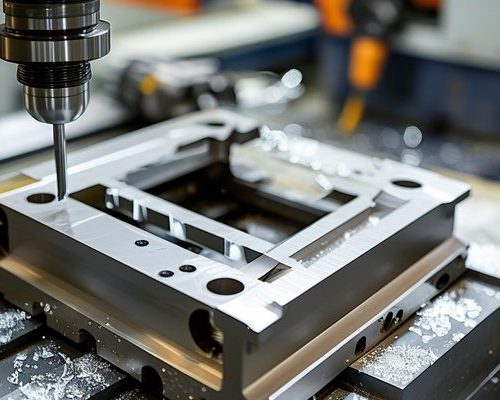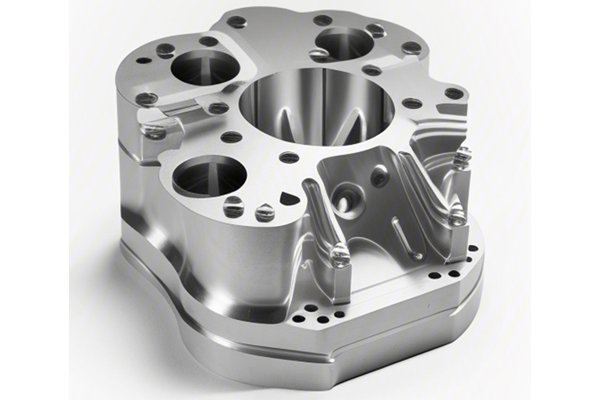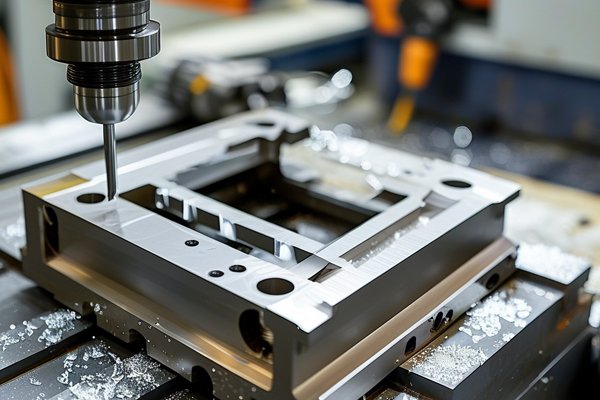Imagine standing in a workshop filled with high-tech machinery, the rhythmic hum of tools working their magic around you. That’s the symphony of CNC machining—where art meets precision engineering. If you’ve ever asked yourself how those intricate parts come to life so flawlessly, you’re in for a treat! In this article, we’ll delve deep into the fascinating world of CNC machining services. We’ll explore everything from fundamental concepts to intricate applications, all while simplifying complex terminology into relatable, everyday language. Strap in, and let’s unlock the mysteries of CNC machining together!
What is CNC Machining? Understanding the Basics
Before we dive into the nitty-gritty, let’s break down what CNC machining really is. CNC stands for Computer Numerical Control. Picture this: rather than a human operator manually controlling machines, a computer does the heavy lifting based on pre-programmed designs. Just like how your smartphone follows commands, CNC machines transform digital designs into physical objects with unparalleled precision.
This technology is like having a talented artist, precise and efficient, sculpting your parts to perfection. Whether it’s the aerospace industry or a small batch of custom parts, CNC machining plays an integral role. But what exactly makes it tick?
The Machinery Behind CNC: What Do You Need to Know?
When it comes to CNC machining, several types of machinery are at play, each suited for different tasks.
Understanding these machines helps demystify the process and appreciate the technology’s versatility.
The Process: How CNC Machining Works
Ever wondered how your wild ideas transform into tangible parts? The CNC machining process typically follows these steps:
Design Phase: From Concept to CAD
It all starts with an idea. Designers use Computer-Aided Design (CAD) software to create detailed drawings of the parts they need. This stage is like an artist sketching before painting; every detail counts here, and adjustments are easy to make.
Programming: The CNC Language
Once the design is ready, the next step is programming. Operators write a G-code—a type of language that tells the CNC machine what to do. It’s akin to giving directions to a lost friend; clarity here is key to success.
Setup: Preparing the Machine
Now the fun begins! Setting up the CNC machine involves mounting the material, installing the right tools, and calibrating the machine according to the specifications. Imagining the technician as a conductor warming up the orchestra can help visualize this crucial stage.
Machining: The Execution
With everything in place, the CNC machine gets to work. It follows the G-code to mill, cut, or drill the material into the desired shape. The precision of CNC machining is like the precise movements of a dancer, each movement intentional and calculated.
Inspection: Quality Control
After machining, inspection is essential. Just as an artist steps back to evaluate their work, quality control measures ensure all parts meet the required standards and specifications.
Applications of CNC Machining: Where Precision Meets Purpose
One of the most exciting aspects of CNC machining is its versatility. Here are some industries where CNC services shine:
Aerospace Industry
In aerospace, precision is non-negotiable. Components need to withstand extreme conditions, and even the smallest error can lead to catastrophic failures. CNC machining ensures that every part is crafted to the highest standards—it’s the guardian angel of the skies!
Automotive Sector
The automotive world relies heavily on CNC services to produce everything from engine blocks to brackets. With the demand for rapid prototyping and manufacture of high-performance parts, CNC machining becomes indispensable, driving innovation at high speeds.
Medical Field
In healthcare, where precision can mean the difference between life and death, CNC machining plays a critical role. Surgical instruments, implants, and prosthetics require meticulous design and accuracy—CNC machines provide just that.
Consumer Goods
From electronics to furniture, the consumer goods industry also benefits greatly from CNC machining. Manufacturers can produce complex designs quickly and efficiently, keeping up with the fast-paced demands of modern consumers.
Benefits of Using CNC Machining Services
So, why should you consider CNC machining for your next project? Let’s explore some compelling benefits:
High Precision and Accuracy
One of the main advantages of CNC machining is its ability to produce complex parts with incredible precision. This level of accuracy reduces waste and ensures a perfect fit, saving both time and money in the long run.
Consistency in Production
Imagine being able to produce thousands of identical parts without a hitch. CNC machining guarantees that each item is manufactured to the same exacting standards, eliminating those pesky discrepancies.
Flexibility in Design
When your creativity knows no bounds, CNC machining can keep up! It can handle both simple and intricate designs, giving you the freedom to explore innovative concepts without worrying about the manufacturing limitations.
Reduced Labor Costs
Once set up, CNC machines require minimal human intervention. This means lower labor costs and the ability to shift human resources to more critical tasks, enhancing overall productivity.
Common Misconceptions About CNC Machining
Like any advanced technology, CNC machining comes with its myths. Let’s bust a few common misconceptions:
CNC Machining is Only for Large Manufacturers
Not true! CNC machining is accessible to both large corporations and small businesses. With the rise of online CNC machining services, even startups can harness this technology without breaking the bank.
It Only Works with Metal
While metal is a common material, CNC machines can also work with various materials, including plastic, wood, and composites. It’s like having a toolkit that you can use across different crafts!
CNC Machining is Too Complex to Learn
Sure, there’s a learning curve, but just like mastering a new video game, anyone can learn the ropes with practice. Many online resources and training programs are available, making it easier than ever to get started.
Tips for Choosing the Right CNC Machining Service
Navigating the sea of CNC machining options can feel overwhelming, but don’t worry! Here are some helpful tips for selecting the right service:
Evaluate Their Expertise and Experience
Look for companies with a proven track record in the specific industry you’re targeting. Experience often translates to higher quality and better problem-solving capabilities.
Check for Capabilities and Technology
Ensure the CNC service provider has the necessary machinery and technology to handle your specific requests. The more diverse their arsenal, the better they can accommodate complex projects.
Quality Assurance Measures
Inquire about their quality management practices. A reputable company should have rigorous inspection processes in place to guarantee that the final products meet your standards.
Communication is Key
A CNC machining partner should communicate effectively and transparently. They should be available to address your queries and provide updates throughout the production process.
Looking Ahead: The Future of CNC Machining
As we move further into the 21st century, CNC machining continues to evolve. With advancements in technology like AI and robotics, the future holds exciting possibilities—think faster production times, even greater precision, and enhanced customization options.
Will we see fully automated factories run solely by machines in our lifetime? It’s possible! However, the human touch will always be vital in translating creative ideas into reality, ensuring that CNC machining continues to thrive as a blend of technology and artistry.
Final Thoughts: Welcome to the CNC Family!
Congratulations! You’ve made it through an exploration of CNC machining services. Whether you’re a seasoned engineer or a curious newcomer, hopefully, you now have a clearer understanding of how this dynamic field works and why it matters.
As you embark on your CNC journey, remember that every successful project starts with a strong foundation of knowledge. Keep asking questions, exploring innovations, and don’t hesitate to reach out to service providers who can bring your ideas to life. The world of CNC machining is waiting for you—so dive in, get inspired, and let your creativity run wild!
Armed with this knowledge, you can confidently harness the power of CNC machining and become a part of this incredible community. Who knows? Your next big idea might just be a CNC machined part away!



